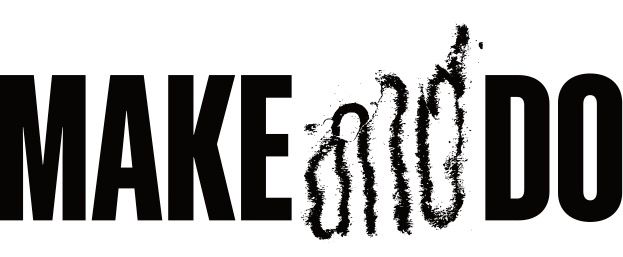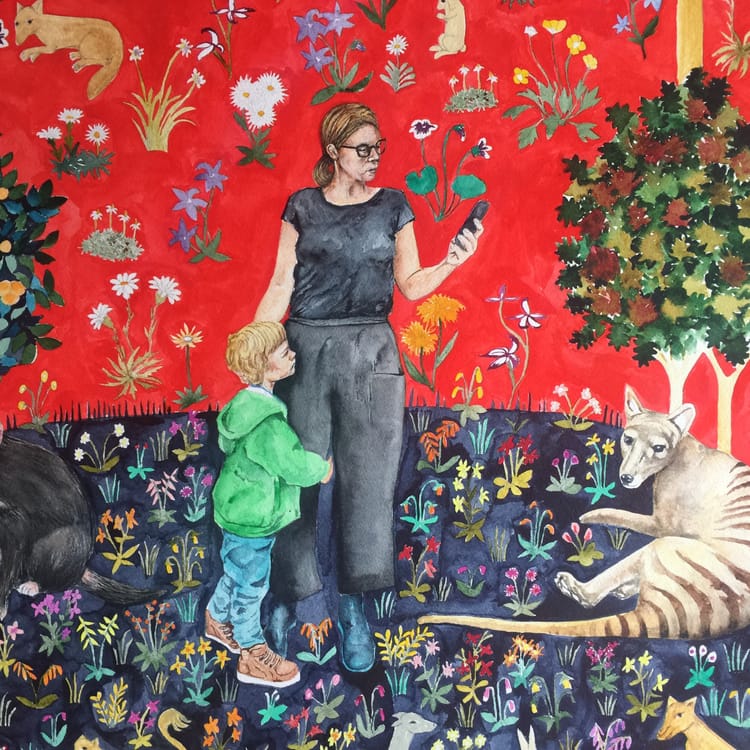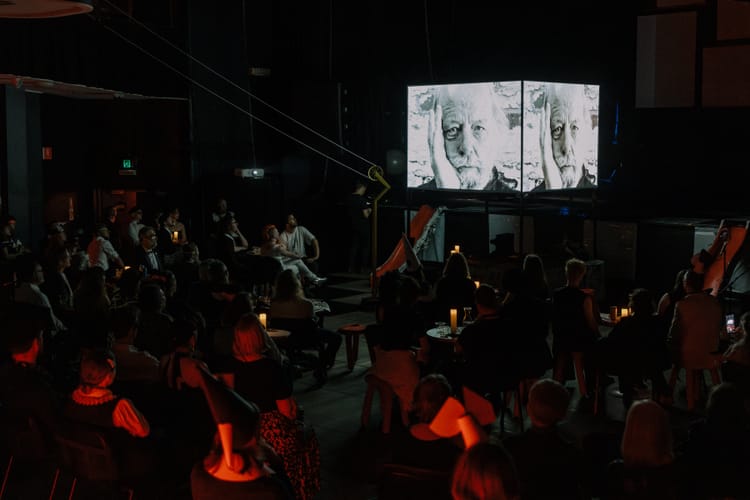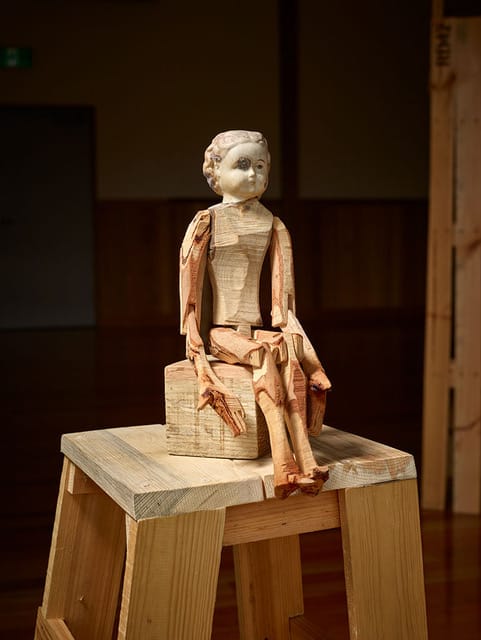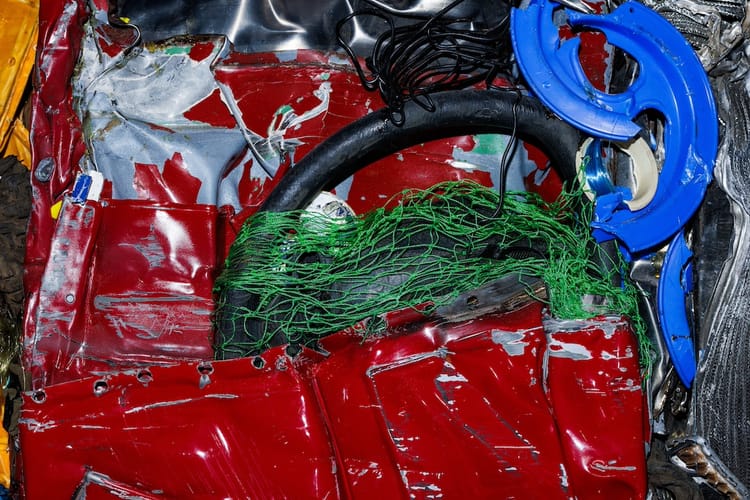The first one | July 2023
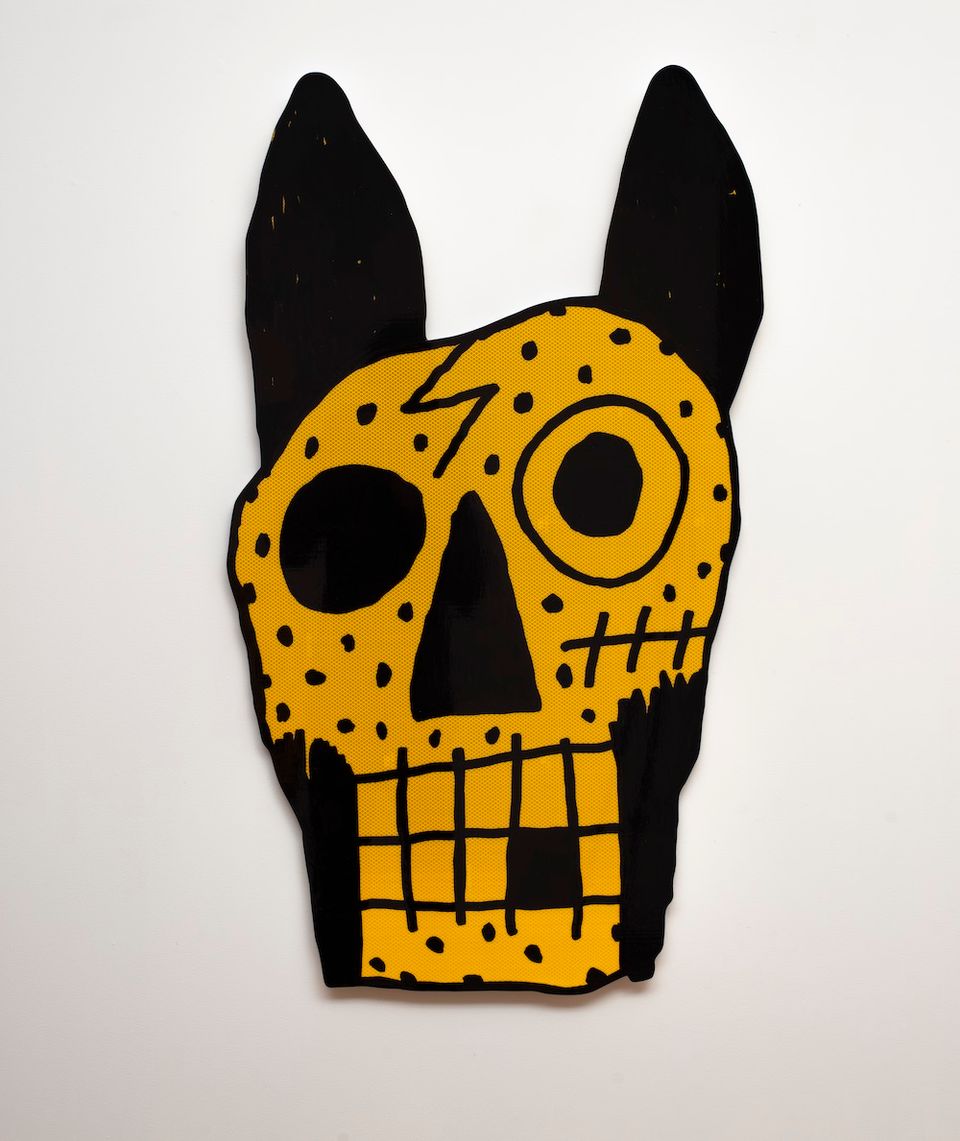
Hi and Welcome to Make and Do.
Some – I believe most of you – have been subscribers to my previous, more ad hoc newsletter. Thanks for hanging around and it’s lovely to be in touch again. I wouldn’t be doing this without you.
To all the new folks:
Hello - and good grief, you are amazing, it’s lovely to meet you like this. If you’re wondering what’s going on, you will now be receiving (initially) a monthly email which will have something to read about art, and if you were awesome and able to support this project, you will also get access to extra writing. There'll be previews of the paid stuff and reminders that you can pay if you want to, but, you know, no pressure.
What will the writing be?
Mostly, it will be thoughts and critique about art in Tasmania, or art by Tasmanian artists. There will also be thoughts about culture, and there might even be some opinion along the way. There’s also going to be other writers, as I’m a white person from a colonial background, and I think its my responsibility to make space for other voices and points of view.
Why does this exist?
I think conversation about art and ideas is important. I believe art can’t get better in a vacuum. I think there’s lots of very different art that does very different things and that there’s a level at which it’s all interesting. I also think community is important, and that we create community by sharing our impressions and ideas – or at least that’s one way we can contribute to the creation of community.
I also think that talking about art is fun, and that doing it respectfully is great, and that if we want a better world that sharing how we create and express ourselves is part of that. I don’t think art changes the world, but it helps us imagine the world we want. So, that’s why.
Now some thank you stuff:
Thanks to Arts Tasmania for support. This would not exist at all without the grant I received to get it up and running, and thanks for being flexible too.
I want to thank David Campbell, who designed the logo you’ll see being used. DC is an astonishingly talented human, and his work is simply the best. Check him out here.
I really want to thank Pip Stafford, who did all the tech grunt and web creation making this beast work, who also encouraged me, and believes this project is important. Pip is amazing and does amazing things, all the time. Check out what she does.
Thanks to everyone who signed up. I have shocking imposter syndrome and your support at the outset has overwhelmed and humbled me. I am so excited to see there are so many people who want to read about art, because I think it’s important.
Alright. Welcome. Please share this with anyone you want. That’s what it’s for.
Andrew Harper, July 2023
HELL PIG: Tom O’Hern
Bett Gallery
The most disturbing drawing I’ve ever seen in my life turned up in an odd place: the pages of the Kangaroo Creek Gang Club in Hobart’s Mercury in the mid-90s. This page regularly published drawings sent in by children, and one week it sported a child’s drawing of Satan. The image was crude and its presence somehow shocking, with an edge of uncontrolled bedlam suggested by its imprecise contours and sheer expressive evil. What was this doing here, and why on earth was it in newsprint? What it did show me though, was the incredible power a rugged and untutored drawing can have, and how accessing that crude energy might provide a level of emotional resonance that a more sophisticated, or even skilled, drawing might have. The crude rawness shoved the subject matter at me. There was no side stepping into a conversation about the skills of the artist as a way of avoiding the lurching potential this crude and terrifying wonder made me face.
Tom O’Hern is probably one of the most well-recognised artists in Tasmania right now. This is by a kind of design, as he spent a lot of time making work that ended up on the streets of Hobart – indeed there was a moment, perhaps a decade back, where his distinct line and bold TOM signature seemed near ubiquitous. O’Hern made stickers that gave faces to all kinds of public instalments, he drew on nearly any surface he could find, he made stickers of skulls, came up with slogans and just kept going, in a near relentless campaign to mark the city of Hobart with a mess of his own making. Tom’s style of drawing evolved as he went along in an interesting way: when I first encountered his work at Hunter Street, it was a lot more detailed and meticulous, more classically illustrative, and somehow prettier, despite some relatively gruesome subject matter. His gradual shift in style is interesting, as you could say his work became simpler, but that’s not exactly right. Rather his style loosened and his need for realism was slowly ejected for a more chaotic style that has the primitive sophistication one used to find in things like medieval illuminated texts. In these you can find, should you search, all manner of odd and feral beings that are often taking a crap, as Tom O’Hern’s creatures are, or are somewhat oddly demonic entities, like Tom O’Hern’s creatures are.
I think as the strictness of realism was shed, Tom’s output became more tinged with metaphor and idea, although it’s still also about the sheer expressive joy of drawing weird looking stuff. Tom draws what he likes, and what he likes is comically grotesque. It’s just that that’s not all it is. There are two undercurrents I’ve started to identify. One is a kind of occult symbology that may have simply come from an investigation of older images of demonic entities, which is interesting enough in itself, because you could see this as placing O’Hern in a tradition that stretches back centuries and takes in artists like Bosch and Breughel. O’Hern does have fun examining the traditions of the grotesque, and it does link him as well to strains of underground art and non-traditional sources of imagery – like comics or the heavy metal genre. This isn’t so pronounced, but it is there in the mix, and it makes O’Hern more interesting when you realise he’s a magpie who has studied quite widely, and that part of what he’s doing is paying homage to one of the longest running veins of art. Grotesque stuff is possibly also simply more fun to draw, and drawing monstrous creatures is a lot of genuine fun.
The other strain is more interesting and potentially subversive. If we look at the title of this show, Hell Pig, O’Hern is talking about an extinct animal, the entelodont, which was a huge pig with a massive jaw. O’Hern, in an artist’s statement, compares it size wise to a car. What’s really interesting though is that the pig doesn’t feature in the show. What does feature in the show is a lot of deformed and hilarious monstrosities that are all drawn on reflective surfaces that look a lot like road signs, along with a reference to being tailgated by a car that reminded Tom of a skull. There’s a monstrous creature we can’t see that’s the size of a car, and while the terrifying pig is extinct, the car is not at all. Cars take out a lot of Australian animals on the roads, cars kill people, cars pollute and send fossil fuels into the atmosphere. Cars are a problem, which is a terribly interesting thing to consider, because in Australia, we love cars. We associate them with freedom and with status. They are pretty useful, but they are also pretty dangerous, and there’s not enough public transport around to act as a genuine alternative.
Cars are an integral part of Australian culture, so much so that we can’t really understand what Australia would be like without cars, but consider that most cities are designed with the car foremost in mind. Not people or animals, but cars. Hell Pig is, to some extent, a comment on what cars do to animals in Australia, and as such, it’s also a comment on car culture. It’s not a polemic, but the problem of cars being devouring and destructive monsters isn’t something that’s pointed at all that much. Tom does it in something of an oblique way, but the idea is there to be grasped, and if you want to do something really subversive in Australia, critiquing the cult of the car is right up there. Ideas about the effect on Australian animals of colonisation, land clearing and the problems of introduced species are fairly consistent throughout Tom’s art, but Hell Pig is possibly the most overt version of this to date; Tom is certainly doing something a bit more pronounced here in wondering directly about the road toll of Australian animals.
He’s also still Tom O’Hern: even if there are ideas poured into his work, the investment in chaotic and joyful grotesque will always be present and important. The sense of fun is crucial to making it all work. Tom is not interested in the didactic – there’s always going to the pagan necromantic sense of comedy alongside anything he wants to discuss – but the point is that Tom is a lot more than a joker who scribbles on walls, and deserves his place as one of Tasmania’s most engaging and thoughtful artists, who takes some complex ideas to a much broader population.
NEST OF PREMONITIONS: James Gleeson
Found as part of ALL THINGS MUST PASS, Tasmanian Museum and Art Gallery
I look at an awful lot of art and a lot of it is awful. I see sincere efforts by decent people that’s reasonable, and I keep what I actually hold precious about art to myself for the most part. I see my job as a writer about art to first and foremost celebrate that art exists at all, and to invite people to engage with it and to form their own opinions. I am from a background of privilege, which is also innately conservative, and I am deeply interested in what other people bring to a work of art and how that might change over time as culture changes. I have my approach and it serves me very well, as a way to be an arts writer in a colonial city sited on stolen land.
~ This is a paid content preview. Already a subscriber? Your full copy will be available for you in your email inbox and on the Make and Do website. ~
